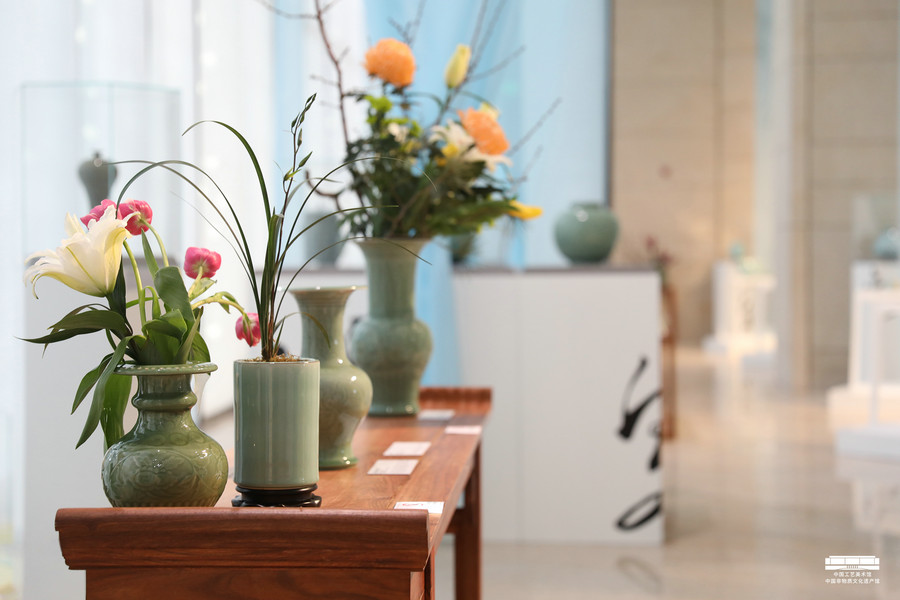

The soft grayish-yellow and lustrous glow of a Longquan ware was associated to a man of letters and high morality in ancient China, who didn't favor showcasing his fine qualities.
Originating in Zhejiang province, celadon ceramics produced at kilns in Longquan reached its climax during the Song Dynasty (960-1279), and were transported to other sides of the world via the Maritime Silk Road.
In 2009, the traditional firing technology of Longquan celadon was added to the Representative List of UNESCO's Intangible Cultural Heritage of Humanity.
An exhibition now on at the Chinese Traditional Cultural Museum, Kiln Fire Never Extinguishes, shows how modern potters have enriched the Longquan celadon legacy. Artists featured at the show vary in age including both senior ones who enjoy wide reputation in the field and emerging personas who try to make the ware attractive to the younger generation of viewers and collectors.
Also, the exhibition shows the integration of Longquan ware in a cultural life that was prompted by ancient intellectuals, for example, decorating one's study, being used as the utensil for floral arrangements, tea and incense burners, to name a few.